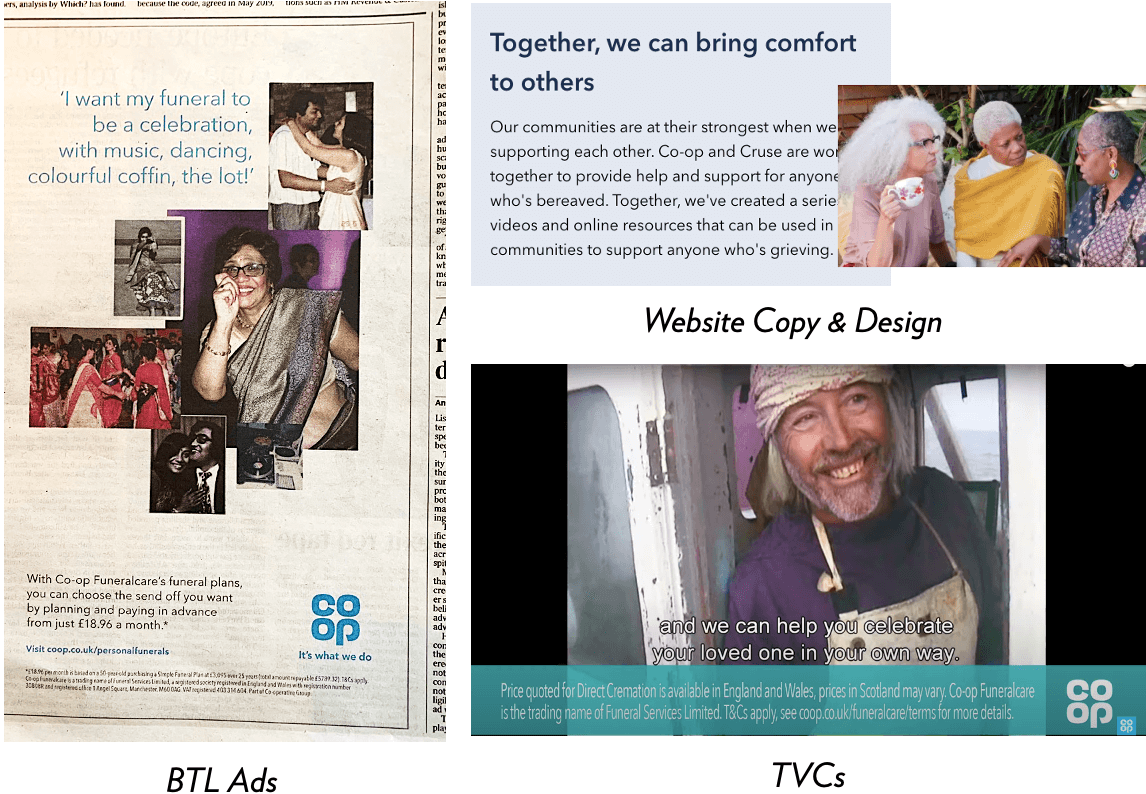Case Study: Co-op Funeralcare
How do you create interest and action
amongst consumers in advance of immediate need?

The challenge
Co-op Funeral Care & Life Planning (FLP) identified a decline in performance relative to the market. There were concerns that the category could be disrupted by newer brands challenging accepted norms, in light of evolving cultural attitudes.
Co-op FLP sought to re-imagine the brand’s customer proposition and develop its offerings, to align with new customer needs, attitudes, and motivations – whilst ensuring the brand remained relevant to its core customer base.
Sign Salad – who previously supported Co-op FLP with a similar business objective in 2013 – was approached to review its existing semiotic report on the cultural meaning of Funeral Care, Ageing, Death & Grief in the UK, along with an analysis of key (emergent) competitors and the Co-op FLP business unit itself.
What did we do?
We undertook a review of Sign Salad’s previous semiotic report (2013), together with a fresh analysis of Funeral Care, Ageing, Death & Grief in the UK culture (2019), identifying key dominant to emergent shifts.
This was followed by a semiotic analysis of key competitors, ranging from mainstream to leading-edge brands in the Funeral Care and Insurance category. We cross-fertilised our findings from the Cultural Context and Competitor Analysis, identifying 4 future-facing cultural ‘territories’.
Finally, we undertook a semiotic analysis of Co-op FLP, assessing the extent to which the brand aligned with narratives of Funeral Care, Ageing, Death & Grief in the UK.
Where did it lead?
Findings from this study fed into parallel creative ideation workstreams, and offered practical guidance on how Co-op FLP could evolve touchpoints.
We identified ‘Empathetic Embrace’ as an optimal, distinctive space for Co-op to position itself in, providing granular recommendations on how the territory could be brought to life. Within this, we specified the codes/cues that Co-op should retain, dial down and import to communicate in a culturally relevant and future-facing manner, whilst overcoming tensions within the brand.
This led to a successful re-articulation of the brand across consumer touchpoints, with a revamp of comms imagery, livery and copy that included a particular focus on greater inclusivity, approachability, and personal touches, as well as a shift away from concepts of death as sombre finality towards death as positive regrowth and renewal.

